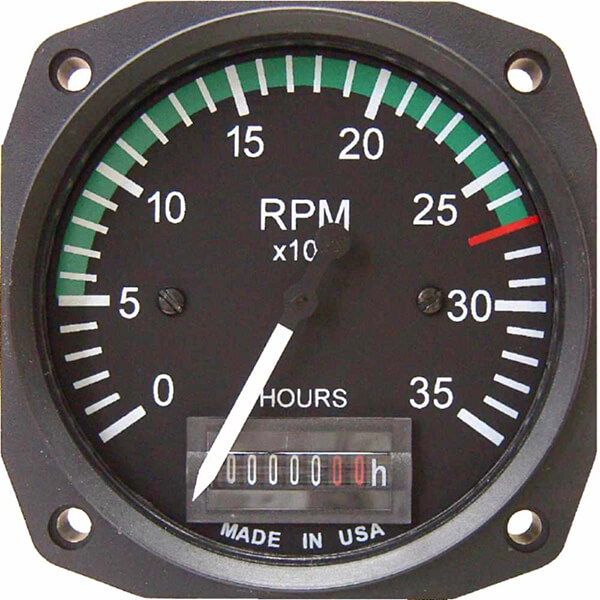How a Tachometer Aids Monitor Engine Wellness and Efficiency
How a Tachometer Aids Monitor Engine Wellness and Efficiency
Blog Article
The Relevance of a Tachometer in Monitoring Engine Rate and Efficiency in Automotive Applications
In the world of vehicle design, the tachometer stands as an essential instrument in the driver's toolbox, supplying a straight home window right into the internal operations of a car's engine. Beyond its feature as a plain scale of changes per min (RPM), the tachometer serves as a crucial tool for enthusiasts and experts alike, providing real-time insights into engine performance and wellness.
Importance of Keeping Track Of Engine RPM
Keeping track of engine RPM, or transformations per minute, is a vital element of auto upkeep and efficiency analysis. Engine RPM straight associates with the speed at which the engine's crankshaft rotates, indicating how rapidly the engine is running - tachometer. By keeping track of RPM, mechanics can assess the health of the engine, identify possible problems, and fine-tune efficiency. An abnormal RPM analysis might indicate issues such as engine misfires, faulty ignition system, or concerns with the fuel shipment system. Consistently high RPM analyses could indicate hostile driving behaviors or the demand for a greater gear change to improve fuel effectiveness.
In addition, monitoring engine RPM is essential for efficiency assessment in auto racing and high-performance lorries. Preserving optimal RPM levels is crucial for attaining peak power output and velocity. Racers usually use tachometers to guarantee they are operating within the ideal RPM variety for optimum performance. In recap, monitoring engine RPM is not only vital for finding issues however additionally for enhancing engine efficiency in numerous auto applications.

Advantages of Real-Time Information
In automotive applications, real-time data plays an important function in supplying instantaneous understandings right into the efficiency and problem of the car. By constantly keeping an eye on numerous criteria such as engine rate, temperature level, gas usage, and a lot more, real-time data offers countless benefits that add to boosted efficiency and security when traveling.
Additionally, real-time information assists in performance optimization by giving instant responses on driving routines and engine efficiency. Vehicle drivers can change their actions in real-time based on this info to achieve much better fuel economic climate and prolong the life-span of their car.

In addition, real-time data plays an essential role in contemporary auto diagnostics, enabling technicians to swiftly diagnose and deal with breakdowns. This leads to decreased downtime, resource reduced maintenance expenses, and inevitably, improved general automobile reliability and long life (tachometer). By taking advantage of the power of real-time information, automotive stakeholders can make educated choices that favorably impact both the performance and durability of the car
Effect On Gear Shifts
The tachometer plays a vital role in optimizing gear shifts by giving real-time engine rate information to the vehicle driver. When approaching the redline on the tachometer, it signals the vehicle driver to upshift to protect against over-revving the engine and creating prospective damages.
Furthermore, the tachometer help in achieving smoother equipment changes, especially in hands-on transmissions. By keeping an eye on engine rate, drivers can execute equipment changes at the optimum RPM range, lowering snagging activities and lessening wear on click here to find out more the transmission components. This accuracy in equipment modifications not only enhances driving convenience however likewise adds to sustain effectiveness.
Enhancing Fuel Performance
Offered the essential duty the tachometer plays in enhancing equipment changes for performance and engine wellness, it directly adds to optimizing fuel effectiveness in automobile applications. By giving real-time responses on engine speed, the tachometer assists chauffeurs in keeping the most efficient RPM variety for fuel economy. When chauffeurs continually monitor the tachometer and readjust their driving behaviors appropriately, they can stay clear of unnecessary gas usage brought on by over-revving or carrying the engine.
Additionally, the tachometer assists vehicle drivers identify the most fuel-efficient gear to be in at any given moment, preventing the engine from working harder than necessary. In final thought, the tachometer serves as an important tool in improving fuel efficiency by promoting optimal driving habits and identifying areas for improvement in the vehicle's efficiency.

Making Best Use Of Engine Durability
The tachometer's role in checking engine speed and efficiency is important in ensuring the longevity of vehicle engines. Keeping an eye on the tachometer allows motorists to stay within the suggested RPM array for their car, protecting against unnecessary strain on the engine and expanding its life expectancy.

Conclusion
To conclude, the tachometer plays a vital role in checking engine speed and efficiency in automotive applications. By giving real-time data on RPM, it permits for effective equipment shifts, boosted fuel performance, and taken full advantage of engine durability. This tool is necessary for preserving optimal engine efficiency and Discover More ensuring the general functionality of an automobile.
Report this page